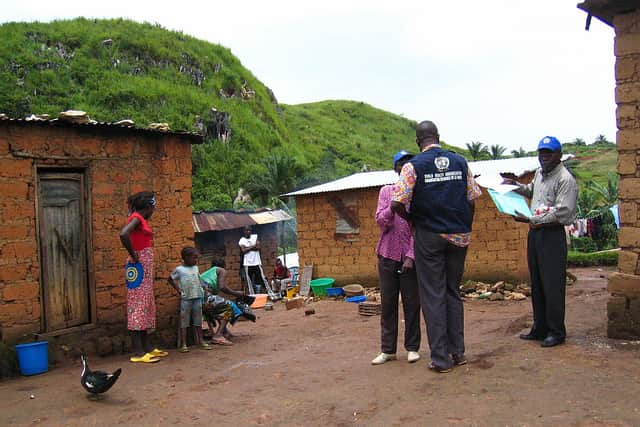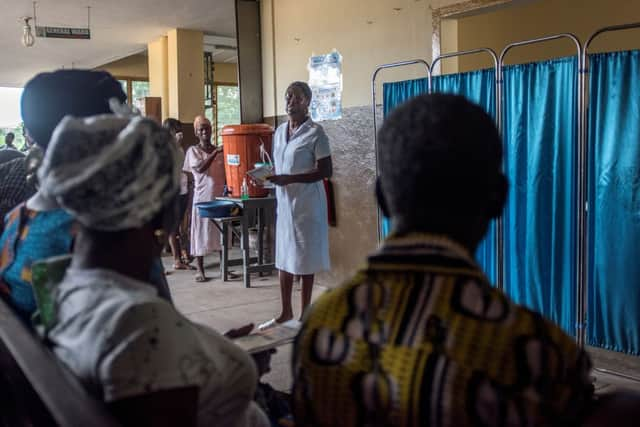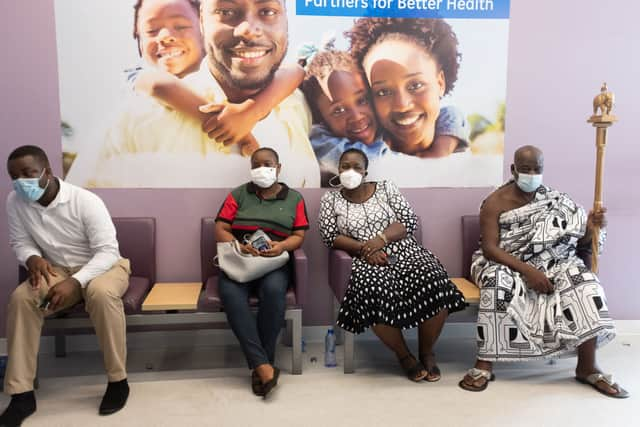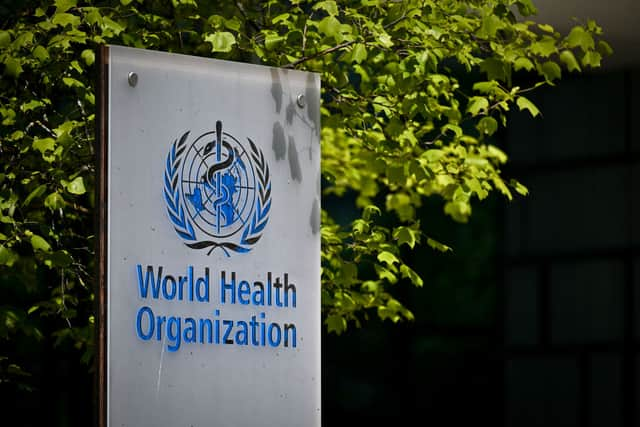Marburg virus: symptoms of disease linked to Ebola explained - what is situation in Equatorial Guinea?
and live on Freeview channel 276
A Marburg virus outbreak has been identified in Equatorial Guinea, sparking an urgent meeting by the World Health Organisation (WHO) over concerns that the virus could spread.
As of 16 February, nine deaths have been reported in Equatorial Guinea in people whose symptoms were consistent with the virus. A further 16 cases are suspected to be caused by the virus, with patients suffering symptoms inculding fever, fatigue and blood streaked vomit and diarrhoea according to reports.
Advertisement
Hide AdAdvertisement
Hide AdThis marks the first time that the country in Central Africa has experienced a Marburg outbreak.
It’s thought that two 16 year olds are suspected to have contracted the virus in the neighbouring country of Cameroon, however these cases hae not yet been confirmed by the WHO.
What is the Marburg virus?
WHO explains that the Marburg virus is a “highly virulent disease that causes haemorrhagic fever, with a fatality ratio of up to 88 per cent”.
The virus is in the same family of viruses that causes the Ebola virus, and it was two large outbreaks that occurred simultaneously in Marburg and Frankfurt in Germany, and in Belgrade, Serbia, in 1967 that led to the initial recognition of the virus.
Advertisement
Hide AdAdvertisement
Hide AdSince then, WHO says, outbreaks and sporadic cases have been reported in “Angola, Democratic Republic of the Congo, Kenya, South Africa (in a person with recent travel history to Zimbabwe) and Uganda”.


Additionally, in 2008, two separate cases of the virus were reported in travellers who had visited a case inhabited by Rousettus bat colonies in Uganda.
In 2005, the virus killed more than 200 people in Angola, making it the deadliest outbreak on record.
“Human infection with Marburg virus disease initially results from prolonged exposure to mines or caves inhabited by Rousettus bat colonies,” the WHO says.
Advertisement
Hide AdAdvertisement
Hide Ad“Once an individual is infected with the virus, Marburg can spread through human to human transmission via direct contact (through broken skin or mucous membranes) with the blood, secretions, organs or other bodily fluids of infected people, and with surfaces and materials (e.g bedding, clothing) contaminated with thee fluids.”
What are the symptoms of the virus?
Symptoms caused by Marburg virus begin very suddenly, with a high fever, severe headache and severe malaise.
Muscle aches and pains are also a common feature, and on the third day, severe watery diarrhoea, abdominal pain and cramping, nausea and vomiting is all to be expected.
WHO says: “The appearance of patients at this phase has been described as showing “ghost-like” drawn features, deep-set eyes, expressionless faces and extreme lethargy.”


Advertisement
Hide AdAdvertisement
Hide AdBetween two and seven days after the onset of symptoms, a non-itchy rash has also been reported.
Within seven days, many patients develop “severe haemorrhagic manifestations”, and fatal cases usually have bleeding from multiple areas.
“Fresh blood in vomitus and faeces is often accompanied by bleeding from the nose, gums and vagina,” WHO explains.
In fatal cases of the virus, death usually occurs between eight and nine days after the onset of symptoms, usually preceded by severe blood loss and shock.
Advertisement
Hide AdAdvertisement
Hide AdThe incubation period for Marburg virus varied between two and 21 days.
Can the virus be treated?
WHO says that supportive care, like rehydration with oral or intravenous fluids, and the treatment of specific symptoms improves the survival of patients with the virus.
However, “there is as yet no proven treatment available for Marburg disease”.
Currently being evaluated are treatments including the likes of immune therapies, drug therapies and blood products.
What has happened in Ghana last year?
Advertisement
Hide AdAdvertisement
Hide AdIn 2022, Ghana confirmed its first two cases of the Marburg virus, with officials stating that both patients died in hospital in the southern Ashanti region.
Samples from both cases came back positive for the virus and were also verified by a lab in Senegal.
Health officials said at the time that 98 people were placed under quarantine as suspected contact cases - this included relatives, medics and mortuary workers who came into contact with the two patients in question.


Dr Matshidiso Moeti, the World Health Organisation’s (WHO) Africa director, praised Ghana for its swift response to the virus.
Advertisement
Hide AdAdvertisement
Hide AdDr Moeti said: “This is good because without immediate and decisive action, Marburg can easily get out of hand.”
Speaking to BBC Focus on Africa radio, Dr Patrick Kumah-Aboagye, the head of Ghana’s health service, added: “There’s a whole multi-disciplinary team in the field trying to ensure that we are able to unearth the real source of this.”
What happened in Guinea in 2021?
Less than two months after Guinea declared an end to the Ebola outbreak that surfaced in early 2021, the Marburg virus was detected in samples taken from a now-deceased patient.
The samples, which were tested by a field laboratory in Gueckedou as well as Guinea’s national haemorrhagic fever laboratory, came back positive for the virus. The result was further confirmed by analysis conducted by the Institut Pasteur in Senegal.
Advertisement
Hide AdAdvertisement
Hide AdThe patient had sought treatment at a local clinic in the Koundou area, where a medical team had been sent to investigate his worsening symptoms.


Dr Matshidiso Moeti, World Health Organisation (WHO) Regional Director for Africa, said at the time: “We applaud the alertness and the quick investigative action by Guinea’s health workers.
“The potential for the Marburg virus to spread far and wide means we need to stop it in its tracks.
“We are working with the health authorities to implement a swift response that builds on Guinea’s past experience and expertise in managing Ebola, which is transmitted in a similar way.”
Comment Guidelines
National World encourages reader discussion on our stories. User feedback, insights and back-and-forth exchanges add a rich layer of context to reporting. Please review our Community Guidelines before commenting.
